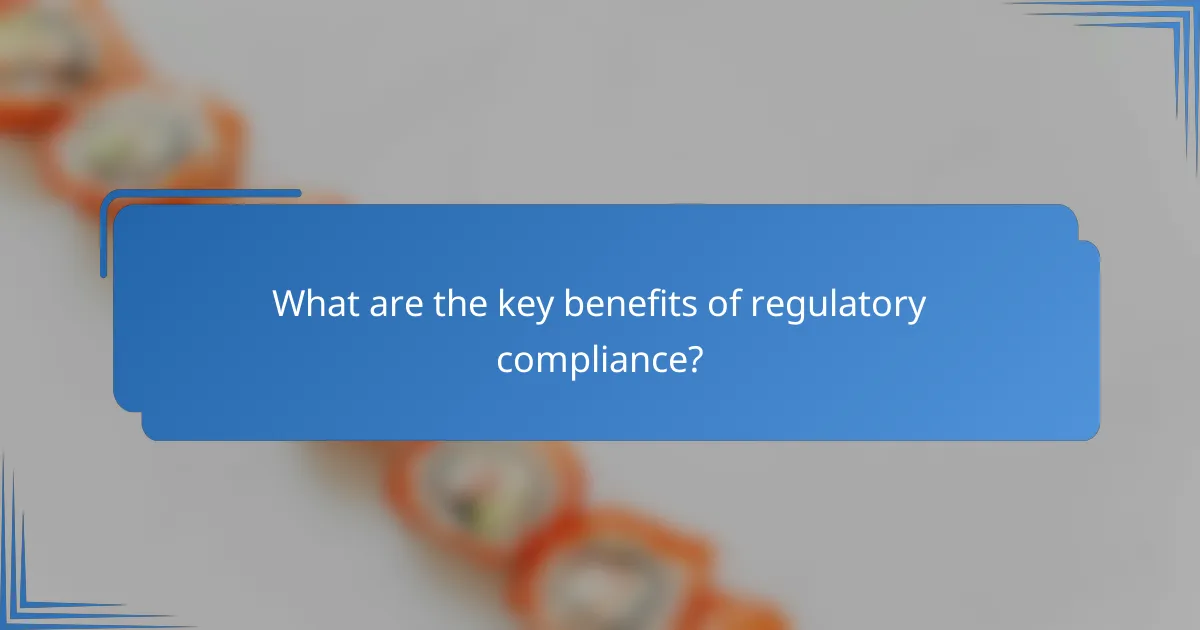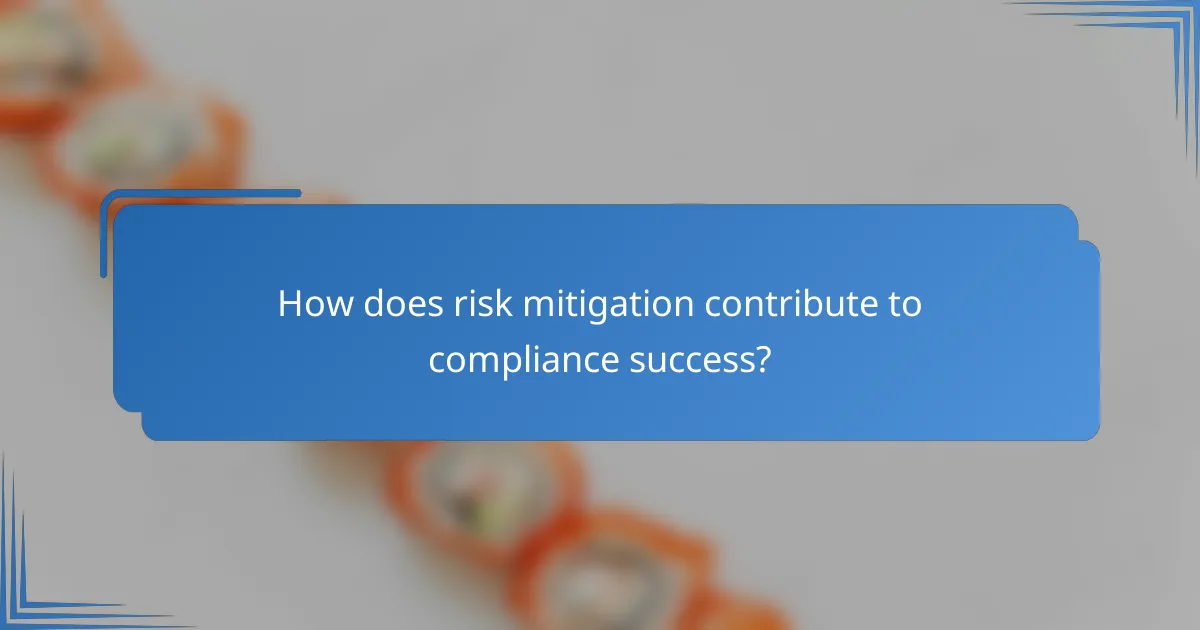Achieving regulatory compliance is essential for businesses in Australia, as it ensures alignment with local laws and industry standards. By fostering a culture of compliance and implementing robust management strategies, organizations can enhance operational integrity, mitigate risks, and build customer trust while avoiding costly penalties.

How can businesses in Australia achieve regulatory compliance?
Businesses in Australia can achieve regulatory compliance by establishing robust systems and practices that align with local laws and industry standards. This involves understanding relevant regulations, implementing effective management strategies, and fostering a culture of compliance within the organization.
Implementing compliance management systems
Compliance management systems (CMS) are essential for businesses to monitor and manage their adherence to regulations. These systems typically include policies, procedures, and controls designed to ensure compliance with laws such as the Australian Consumer Law and the Privacy Act.
To implement an effective CMS, businesses should start by conducting a thorough risk assessment to identify compliance gaps. Following this, they can develop tailored policies and assign responsibilities to ensure accountability. Regular reviews and updates of the CMS are crucial to adapt to changing regulations.
Regular training and education programs
Regular training and education programs are vital for ensuring that employees understand compliance requirements and their roles in maintaining them. These programs should cover relevant laws, company policies, and ethical standards to foster a culture of compliance.
Businesses should consider conducting training sessions at least annually, with additional sessions for new hires or when significant regulatory changes occur. Utilizing a mix of in-person workshops and online modules can enhance engagement and retention of information.
Utilizing compliance software solutions
Compliance software solutions can streamline the process of managing regulatory obligations by automating tasks such as monitoring, reporting, and documentation. These tools help businesses track compliance status and identify potential risks in real-time.
When selecting compliance software, businesses should evaluate features like user-friendliness, integration capabilities, and support services. Investing in a reliable solution can significantly reduce manual workloads and improve overall compliance efficiency.

What are the key benefits of regulatory compliance?
Regulatory compliance offers several key benefits, including enhanced operational integrity, reduced legal risks, and improved customer trust. By adhering to regulations, organizations can streamline processes, avoid costly penalties, and foster stronger relationships with their customers.
Enhanced operational integrity
Enhanced operational integrity arises from implementing standardized processes that comply with regulations. This leads to more efficient operations, as teams understand their roles and responsibilities clearly. For example, adhering to safety regulations can prevent workplace accidents, ensuring a safer environment for employees.
Organizations should regularly review their compliance practices to identify areas for improvement. This proactive approach helps maintain high operational standards and can lead to better resource management and reduced waste.
Reduced legal risks and penalties
By complying with regulatory requirements, businesses significantly lower their exposure to legal risks and potential penalties. Non-compliance can lead to hefty fines, legal fees, and damage to reputation. For instance, companies that fail to meet data protection regulations may face fines that can reach millions of dollars.
To mitigate these risks, organizations should conduct regular compliance audits and training sessions for employees. Keeping abreast of changes in regulations is crucial to avoid unintentional breaches that could result in costly consequences.
Improved customer trust and loyalty
Regulatory compliance fosters improved customer trust and loyalty by demonstrating a commitment to ethical practices and transparency. When customers know that a company adheres to regulations, they are more likely to feel secure in their transactions. This trust can translate into repeat business and positive word-of-mouth referrals.
To enhance customer loyalty, organizations should communicate their compliance efforts clearly. Sharing information about how they protect customer data and ensure product safety can strengthen relationships and encourage long-term engagement.

How does risk mitigation contribute to compliance success?
Risk mitigation plays a crucial role in achieving compliance success by proactively identifying and addressing potential issues that could lead to regulatory violations. By implementing effective risk management strategies, organizations can enhance operational integrity and reduce the likelihood of costly penalties.
Identifying potential compliance risks
Identifying potential compliance risks involves assessing various factors that could impact adherence to regulations. This includes evaluating internal processes, employee practices, and external influences such as market changes or legal updates. Regularly reviewing these areas helps organizations pinpoint vulnerabilities before they escalate.
Common compliance risks include data breaches, inadequate documentation, and failure to meet industry standards. Organizations should maintain a risk register to document identified risks and prioritize them based on their potential impact and likelihood of occurrence.
Developing risk management frameworks
Developing a robust risk management framework is essential for effectively addressing compliance risks. This framework should outline clear policies, procedures, and responsibilities for managing risks across the organization. It should also incorporate risk assessment tools and methodologies to evaluate the effectiveness of existing controls.
Organizations can adopt established frameworks such as ISO 31000 or COSO ERM to guide their risk management efforts. These frameworks provide structured approaches to identifying, analyzing, and responding to risks while ensuring alignment with compliance objectives.
Regular audits and assessments
Conducting regular audits and assessments is vital for maintaining compliance and ensuring that risk mitigation strategies are effective. These evaluations help organizations identify gaps in their compliance programs and provide insights into areas that require improvement. Audits can be internal or conducted by external parties for an unbiased perspective.
Organizations should establish a schedule for audits, typically on an annual basis, but more frequent assessments may be necessary for high-risk areas. Following each audit, it is crucial to implement corrective actions and monitor their effectiveness to continuously enhance compliance efforts.

What operational practices support compliance in e-commerce?
Operational practices that support compliance in e-commerce include implementing robust data protection measures, ensuring transparency in supply chain management, and adhering to consumer protection laws. These practices help mitigate risks and maintain operational integrity while fostering trust with customers.
Data protection and privacy measures
Data protection and privacy measures are essential for e-commerce compliance, focusing on safeguarding customer information. Businesses should implement encryption, access controls, and regular audits to protect sensitive data from breaches.
Additionally, adhering to regulations such as the General Data Protection Regulation (GDPR) in Europe or the California Consumer Privacy Act (CCPA) in the United States is crucial. Companies must ensure that customers are informed about data usage and have the option to opt-out of data collection.
Transparent supply chain management
Transparent supply chain management involves providing clear visibility into sourcing and production processes. E-commerce businesses should disclose information about suppliers, manufacturing practices, and product origins to build consumer trust and comply with regulations.
Establishing a traceable supply chain can also help identify potential risks and ensure adherence to ethical standards. Regular assessments and audits of suppliers can mitigate risks associated with non-compliance and enhance operational integrity.
Adherence to consumer protection laws
Adhering to consumer protection laws is vital for e-commerce businesses to avoid legal penalties and maintain customer loyalty. This includes providing accurate product descriptions, honoring return policies, and ensuring fair pricing practices.
Businesses should stay updated on local regulations, such as the Federal Trade Commission (FTC) guidelines in the U.S. or the Consumer Rights Directive in the EU, to ensure compliance. Regular training for staff on these laws can help prevent violations and enhance customer satisfaction.

What frameworks guide regulatory compliance in Australia?
In Australia, regulatory compliance is guided by a combination of national laws, industry standards, and specific guidelines issued by regulatory bodies. Key frameworks include the Australian Competition and Consumer Commission (ACCC) guidelines, the Privacy Act, and various industry-specific regulations that ensure businesses operate within legal boundaries and maintain operational integrity.
Australian Competition and Consumer Commission guidelines
The ACCC provides essential guidelines that help businesses comply with competition and consumer laws. These guidelines cover areas such as fair trading, product safety, and misleading advertising, ensuring that companies operate transparently and ethically.
To adhere to ACCC guidelines, businesses should regularly review their marketing practices and ensure that all claims about products and services are truthful. A common pitfall is failing to understand the implications of misleading conduct, which can lead to significant penalties.
Privacy Act compliance requirements
The Privacy Act outlines the obligations of businesses regarding the handling of personal information. Organizations must ensure they collect, store, and use personal data in accordance with the principles set out in the Act, which includes obtaining consent and providing individuals with access to their information.
To maintain compliance, businesses should implement robust data protection policies and regularly train staff on privacy obligations. A practical step is to conduct annual audits to identify any potential breaches or areas for improvement in data handling practices.
Industry-specific regulations
Various industries in Australia are subject to specific regulations that address unique compliance requirements. For instance, the financial sector must adhere to the Australian Securities and Investments Commission (ASIC) regulations, while healthcare organizations follow the Health Records Act.
Companies should familiarize themselves with the regulations applicable to their industry and develop tailored compliance strategies. Regularly consulting with legal experts can help navigate complex regulatory landscapes and avoid costly non-compliance issues.

How can businesses measure compliance success?
Businesses can measure compliance success through various methods, including audits, key performance indicators (KPIs), and stakeholder feedback. These approaches help assess adherence to regulations, identify areas for improvement, and ensure operational integrity.
Compliance audits and reports
Compliance audits are systematic evaluations of a company’s adherence to regulatory requirements and internal policies. Regular audits, whether internal or external, provide insights into compliance status and help identify potential risks.
Reports generated from these audits should detail findings, recommendations, and action plans. Businesses can use these reports to track progress over time and ensure that corrective measures are effectively implemented.
Key performance indicators for compliance
Key performance indicators (KPIs) are measurable values that demonstrate how effectively a company is achieving compliance objectives. Common KPIs include the number of compliance violations, the time taken to resolve issues, and employee training completion rates.
Setting specific, measurable, achievable, relevant, and time-bound (SMART) KPIs allows businesses to monitor compliance success and make data-driven decisions. Regularly reviewing these indicators helps maintain focus on compliance goals and operational integrity.
Stakeholder feedback and surveys
Gathering stakeholder feedback through surveys can provide valuable insights into compliance perceptions and areas needing improvement. Employees, customers, and partners can offer perspectives on compliance practices and their effectiveness.
Surveys should be designed to elicit honest feedback and can include questions about awareness of compliance policies and perceived risks. Analyzing this feedback helps businesses identify gaps in compliance training and communication, ultimately fostering a culture of adherence.
